The Lesson of the Raining, Dripping, Crying Duct Boots
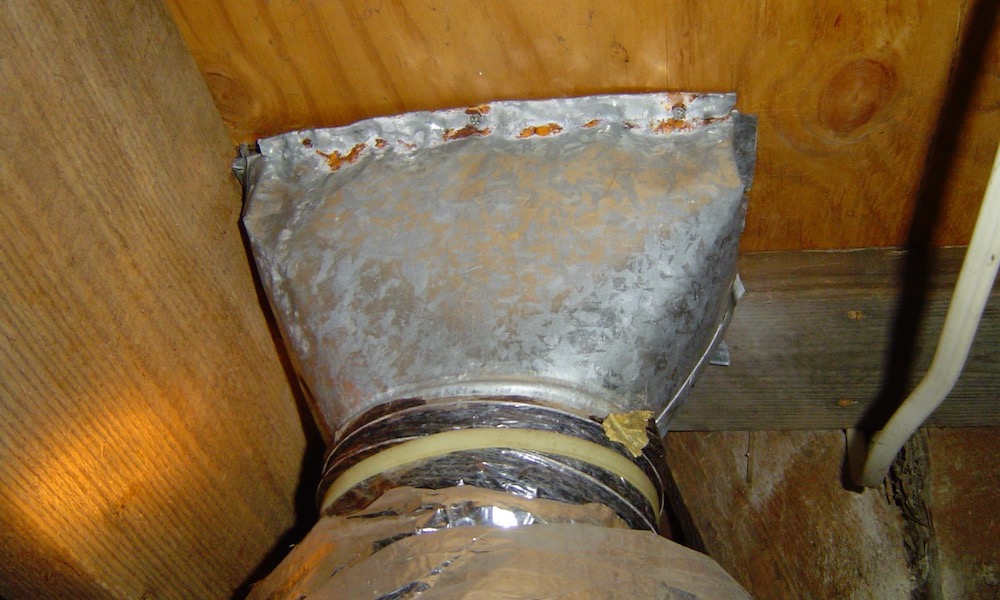
I’ve seen it over and over: The central air conditioner’s ceiling vents raining down onto the floor. The insulation liner on the duct in the crawl space holding a gallon or two of water. The office that has spots appearing on the ceiling. It’s not uncommon at all, although it should be.
Water loves cold, you know. Cold surfaces are almost like magnets to water in its vapor form. Just think how blissfully the water vapor was floating around that one time, minding its own business, and then you sat down and put your nice cold glass of gin and tonic (or whatever cold beverage you prefer) on the table (on a coaster, of course). Within seconds, it seemed, water droplets appeared on the outside of the glass. In my part of the world (Southeastern US), it doesn’t take much longer for those droplets to become driplets.
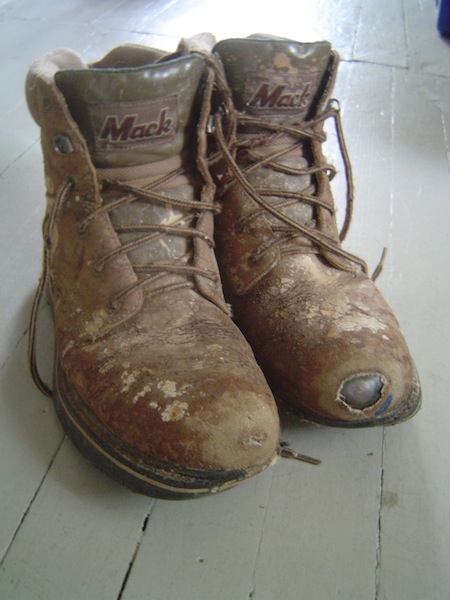
Another place where that same phenomenon happens is on your boots. No, no, not those boots. I’m talking about your other boots, the ones you rarely look at because they’re hidden behind the vents in your home.
Here’s how it goes down. Air with water vapor in it can be described by several important quantities (vapor pressure, relative humidity, humidity ratio, relative fugacity…), but the one we’re interested in here is dew point. When that air finds a surface, such as a cold duct boot, at a temperature below the dew point, the water vapor just can’t help itself. Those water vapor molecules hurl themselves at the below-dew point surface and stick there.
The science is pretty easy to understand. The principle is well known. And yet, I see all the time this problem of water vapor condensing where it’s not wanted.
Behold the mighty duct boot
If you have a central air conditioning system with a duct system in your home, you’ve probably got a lot of boots. Go take a look at them and see if they’re insulated. If they look like the one you see to the right here, where you can see the bare sheet metal, they’re not insulated. When cold air moves through them on the inside and humid air is sitting there on the outside, you’ve got all the ingredients for condensation.
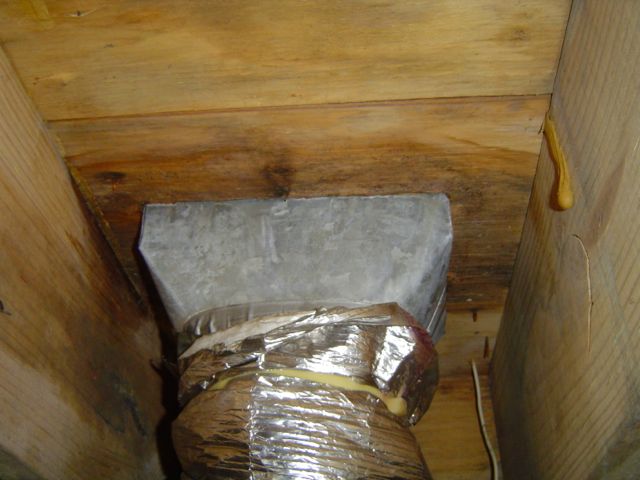
Notice also in that photo that the wood around the uninsulated boot is discolored. That’s because the whole area stays colder. The cold boot not only attracts water vapor, it also attracts those lusty Btus of heat, which attack the cold boot, warming the air inside it and cooling the air outside. When the wood gets colder, it absorbs water from the air. Then it starts growing nasty stuff.
Back to the condensation problem, though, when enough of it starts collecting on an uninsulated boot like the one shown above, the water starts dripping down. The coaster in this case is the duct insulation, which is eager to absorb all the water that drips its way. Once I went into a crawl space that had at least a gallon of water in the duct insulation liner. Wow!
Those duct insulation liners are watertight…to a degree. When enough water sits in there long enough, the stress is too much. You can see the result in the photo below. It may look wet in the photo, but it was totally dry when I was there. The blowout had happened sometime before I ever visited that house.
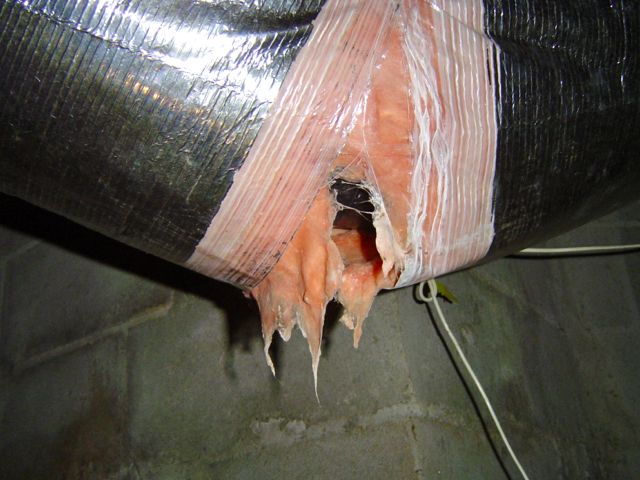
When this happens in a crawl space, it rarely gets discovered or recognized. Who cares if water drips down onto the already wet ground, right? Well, your duct system cares. Your bank account cares. The tadpoles care!
Uninsulated supply boots in a ceiling, however, usually do get noticed, at least in humid climates. Sometimes people don’t know what causes it or what to do about it, but they do notice that they’ve suddenly got spots on their ceiling where they didn’t have spots before.
The moral of this story is to insulate your boots. It’ll save you money on your energy bills and repair costs. It’ll reduce the likelihood of nasty stuff growing in your home. Moisture problems in homes are suspected to be a leading cause of asthma. It’ll make your home more comfortable, too, because the air coming out of those vents will be as cold or as warm as it’s supposed to be.
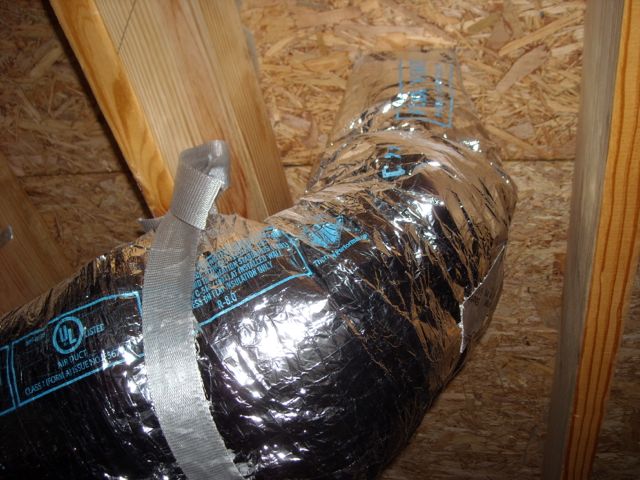
One very important detail to get right is to make sure that you use the proper materials and seal them up. If you insulate with fiberglass, it’s got to covered with a class I vapor retarder (i.e., a vapor barrier) to prevent water vapor from diffusing through to the cold surface. It also needs to be air-sealed to prevent humid air from leaking in and finding the cold surface.
Go on now – go look to see if your boots are insulated. You shouldn’t be able to see any sheet metal if it’s done properly, as shown in the last photo here.
Allison Bailes of Atlanta, Georgia, is a speaker, writer, building science consultant, and the founder of Energy Vanguard. He has a PhD in physics and writes the Energy Vanguard Blog. He is also writing a book on building science. You can follow him on Twitter at @EnergyVanguard.
Related Articles
Water Loves Cold and Other HVAC Duct Failure Stories
Dew Point — A More Meaningful Measure of Humidity?
Be a Controlling Building Enclosure Control Freak with Control Layers
Asthma and Poor Indoor Air Quality — The Trouble with Homes
Comments are closed.
This Post Has 13 Comments
Comments are closed.

I don’t think I ever saw an
I don’t think I ever saw an insulated duct boot. I do see mystery stains on ceilings (particularly drop ceilings in basements) all the time. Of course the stains around ceiling registers below an unconditioned attic is common but not really a mystery. What is the best way to insulate a boot? Do you have any pictures of an insulated boot?
Another good thing to check
Another good thing to check in the sweating register/boot situation is the delta T across the indoor coil. If the temperature drop is too high (and the supply temperature is too low), the register temperature is more apt to drop below the dew point. Yes, insulation is almost always an issue, re-insulating (or double insulating) the boot is an affective “fix”, but folks rarely think of low air flow as a possible cause for condensation issues. Static pressure and air flow delivery should be checked to at least eliminate it as an underlying cause. I know…..everyhing I talk about comes back to air flow but we find it to be a problem in almost every existing HVAC installation.
@Jake, do you think that
@Jake, do you think that static pressure is too seldom checked? If so I would like to hear all the possible ways that measurement could be made easier and more frequent.
Static pressure is not
Static pressure is not checked nearly enough. In most cases, high static pressure correlates with low air flow. Low air flow leads to capacity and efficiency loss, comfort issues, and can reduce equipment life. The measurements are very, very easy to do–a couple of holes to drill and a digital manometer. Easy as pie.
Another place where
Another place where condensation shows up is a toilet. Cold water in tanks and bowls makes water vapor condense and run down the sides of the toilet. I’ve often seen wet wood and mold under a toilet.
Here in Maine, plumbers sometimes mix hot water with the cold water supply so the water in the tank is warm enough not to cause condensation. That’s an expensive fix.
But what else can you do about it?
David
hot humid climate.
hot humid climate.
most supply boots here in my area are insulated. only older heating only systems
have uninsulated boots. As most of the duct installs here are in the attic, with insulated boots, it then becomes the hole where the boot pentrates the ceiling that becomes the dewpoint concern. oversized cuts for boots that are not mastic sealed. (note..mastic not caulked) once supply grill is attached from inside the house, the heat from the attic condenses on the supply grill via the oversized cut of the sheetrock. also in the attic, on the side of the boot where it is nailed/screwed/attached to ceiling joist is still a tight fit..but the other side of the boot is picked up off the attic floor by the screw attaching the grill. having seen this over and over, I’ve found the best fix to be as follows. remove supply grill from inside house,
use hardcast brand mastic 1402 tape. I usually use 3″ tape split lengthways into two 1 1/2″ strips. one length of the tape is applied to sheetrock ceiling
the other folded into the supply boot and sealed to the metal lip inside the box. I’ve done this for wall, attic and floor boots. the material is specific, foil tapes don’t adhere, asphalt backings dont adhere and caulk shrinks. my solution is a one time and done. tried and tested. eliminates duct/boot leakage and condensation stains on ceilings, walls…
when you did the entry on tapes, I was glad to see that you included mastic tape. IMO between the paint on mastics and mastic tape, there are very few areas that can’t be sealed..and long term as opposed to short term lives of other tapes.
in the few cases I’ve come across uninsulated boots I’ve used ductwrap (stapled &fsk; taped to hold ductwrap in contact with boot) mastic sealed at penetration into bldg envelope. then the above mastic tape method to stop any other leakage.
good article Alison. I enjoyed your webinar about mini-splits also. just to poke you…always turn off audio when webinar is over..LOL!
This is a place where a good
This is a place where a good air and vapor seal are needed. Remember the insulation will only make the outside surface of the duct colder. You need to make sure the air carrying the moisture does not get to that cold surface. A continuous air and vapor barrier are needed if you want to be confident that you have avoided the problem. (no leaks either)
Steve Z.:
Steve Z.: You wrap it with duct insulation just like you do any other sheet metal duct. You have to be careful because they’re not a nice symmetrical shape like a round or rectangular section of duct, but it can be done. I’ve had a photo of an insulated boot to the end of the article.
Jake R.: Thanks for bringing up the topic of air flow! Yes, indeed, low air flow can make things colder than they should be and cause condensation to occur where it shouldn’t. Let me add a word of caution for those who might want to check static pressure. Be very careful when drilling holes in the air handler/furnace cabinet. You don’t want to drill into the heat exchanger or evaporator coil!
M. Johnson: I agree with Jake. It’s an easy thing to check that’s not done very often.
David F.: Sweating toilets happen for one of two reasons: Either the air is too humid or the toilet’s too cold. In either case, the temperature of the toilet tank/bowl is below the dew point. You can either raise the temperature of the tank/bowl (which is what your Maine plumbers are doing by mixing in hot water) or lower the humidity of the air. Maybe manufacturers could make an insulated tank/bowl for those of you who live climates that are too cold.
Debbie: That’s true here, too. Most new homes have insulated boots, but there are plenty of existing homes out there that don’t, even some that are relatively new. Yeah, that was an interesting moment when I discovered that we were broadcasting our conversation. Lesson learned on that one.
John P.:
John P.: Indeed! Thanks for pointing out that important point. Insulation alone isn’t enough. I’ll go back and put that in the article, since it should have been there anyway.
I have seen toilet tank
I have seen toilet tank insulating kits that are installed inside the bowl, and I have two of them in mine for about 30 years; they work great. The insulation is 1/4″ polystyrene sheeting, I don’t remember what the mastic was, but it’s been there from day one without a problem.. I think I have also seen insulated tanks from the factory.
You hit the mark on how I got
You hit the mark on how I got gallons of water in my flex duct. The boots need to be insulated but………. HOW and with WHAT?
Another condensation problem
Another condensation problem occurs in cold climates in the winter with AC ducts in the attic and a different heating system. The house air with its moisture rises into the ducts, cools and condenses the moisture, cool air sinks and is replaced with more warm moist air from inside the house. The condensation puddles at low points in the duct and some times finds a way to leak out.
I recently did an assessment
I recently did an assessment on a house here in Charleston, SC that had its first floor HVAC ducts in the enclosed vented crawl space just as many other homes here do. We did a duct blaster test and determined that the ducts were tight as a tick. The duct system had 3% leakage to the outside. When I later ventured into the crawl space I found the duct insulation to be saturated pretty much throughout, and water was dripping from the bottom of all of the insulation. The duct insulation was R-6 which is code in crawl spaces in our climate zone (3). I wouldn’t be surprised at all to see this in a leaky duct system, but I was a little surprised to see it in such a tight system. I’m searching through some of Lstiburek’s stuff now to see what he has to say about it, but I’d be glad to have input from others. Thanks!